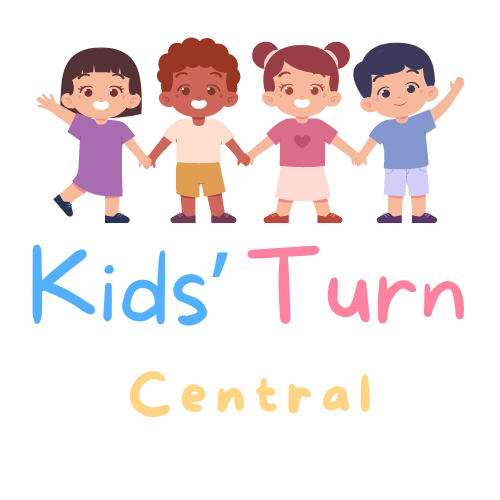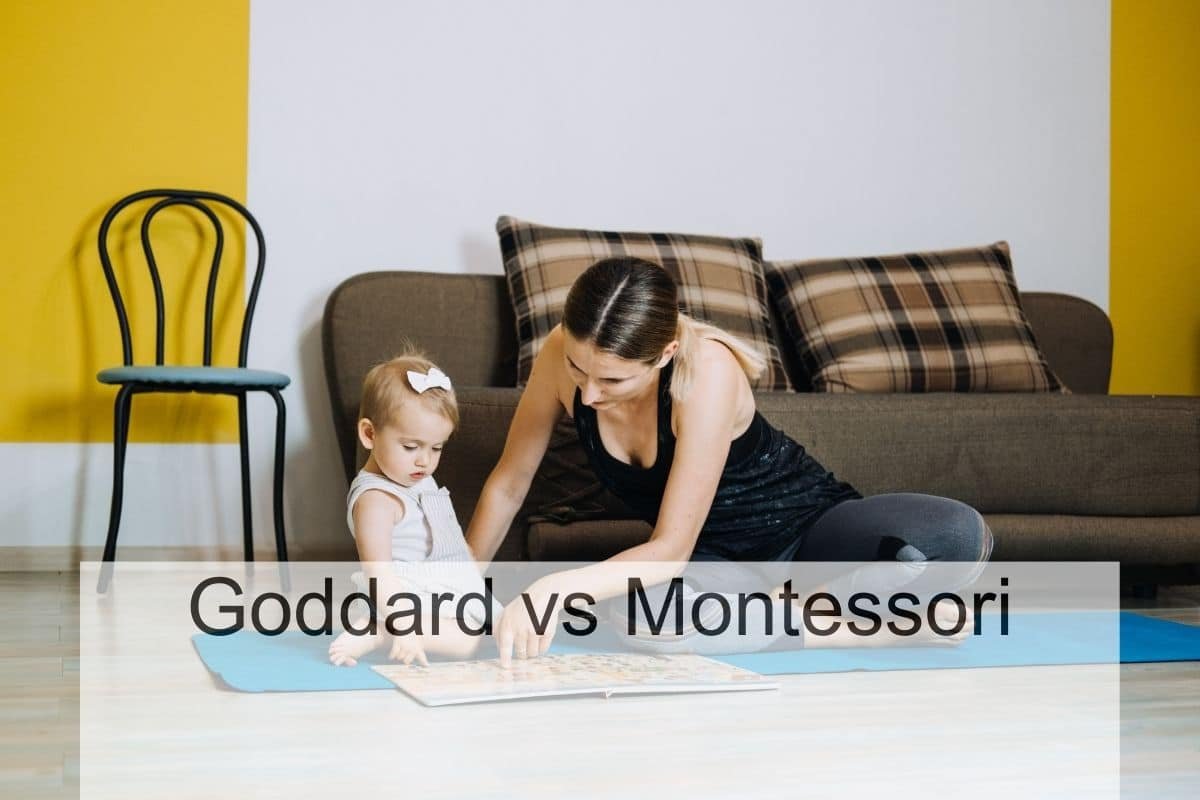I have been researching preschool options for my child and came across two popular methodologies: Goddard and Montessori. Both schools have distinct approaches to early childhood education and choosing the right one for your child can be challenging.

Goddard schools are known for their structured curriculum and franchise model. They offer a specific curriculum that is designed to meet the developmental needs of children. On the other hand, Montessori schools focus on child-led learning and hands-on experiences. They believe that children learn best when they are given the freedom to explore and discover on their own.
Comparing these two methodologies can be confusing, especially if you’re not familiar with the differences between them. In this article, I will explore the key differences between Goddard and Montessori schools, including their teaching philosophies, curriculum, and approach to learning. By the end of this article, you will have a better understanding of which school might be the best fit for your child.
Philosophical Foundations

Goddard Educational Philosophy
As I researched Goddard, I found that their educational philosophy is based on the idea that children learn best through play. They believe in providing a nurturing and safe environment where children can explore and learn at their own pace. Goddard schools offer a structured curriculum that is tailored to each child’s individual needs, interests, and abilities. They also provide a variety of educational materials and activities to help children develop their social, emotional, cognitive, and physical skills.
Montessori Educational Philosophy
In contrast, Montessori‘s educational philosophy is based on the idea that children are natural learners who are capable of developing themselves. Montessori schools provide a prepared environment that is designed to facilitate children’s natural learning process. They believe in allowing children to learn at their own pace and to follow their own interests. Montessori schools offer a curriculum that is based on hands-on learning and exploration, and they emphasize the importance of developing children’s independence, creativity, and critical thinking skills.
Learning Environments

Goddard Classroom Structure
Goddard Schools take a more traditional approach to learning, incorporating toys, puzzles, and games into their early learning environments. Children are also introduced to technology, with the limited use of tablets, digital games, and interactive whiteboards to make lessons fun and engaging. The classrooms are organized into age groups, with activities and lessons tailored to each group’s developmental needs. Teachers provide guidance and support, but children are encouraged to learn through play and exploration.
Montessori Classroom Structure
Montessori incorporates specific Montessori and practical life materials into classrooms where children will do small group or independent, self-guided work on rugs or small tables. The classroom is designed to be a peaceful and orderly environment, with a focus on hands-on learning and exploration. Children are encouraged to work at their own pace, with teachers providing guidance and support as needed. The Montessori approach emphasizes the development of independence, self-discipline, and a love of learning.
Curriculum and Pedagogy

Goddard Curriculum Approach
At Goddard schools, we embrace the use of technology to enhance learning. We use tablets, digital games, and interactive whiteboards to make lessons fun and engaging. Our curriculum is designed to be age-appropriate and focuses on hands-on learning, exploration, and discovery. We believe that children learn best through play and encourage our students to explore and experiment with different materials and concepts. Our teachers guide children through their learning journey, providing them with the tools they need to succeed.
Montessori Curriculum Approach
Montessori schools use a child-centered approach to education. The curriculum is designed to be self-directed, with children encouraged to explore and learn at their own pace. Montessori classrooms are designed to be hands-on and interactive, with children encouraged to work independently and in groups. The curriculum is focused on practical life skills, sensorial exploration, language development, and mathematics. Montessori teachers act as facilitators, guiding children through their learning journey and providing them with the tools they need to succeed.
Role of Teachers

As a teacher, I believe that my role is to guide and support children in their learning journey. In a Goddard classroom, teachers play a more active role in leading activities and providing structure to the day. We use a specific curriculum to ensure that children are exposed to a variety of subjects and concepts. Our goal is to prepare children for the transition to elementary school by building a strong foundation of knowledge and skills.
On the other hand, Montessori teachers have a more hands-off approach. Their role is to facilitate learning by providing children with the tools and resources they need to explore and discover on their own. They create a prepared environment that is designed to foster independence and self-motivation. Montessori teachers also observe children closely to identify their interests and needs, and then provide guidance and support as necessary.
Goddard Teacher’s Role
In a Goddard classroom, teachers are responsible for creating a safe and nurturing environment where children can learn and grow. We use a combination of teacher-led and child-led activities to provide a well-rounded educational experience. Our curriculum includes language arts, math, science, social studies, and the arts. We also incorporate play and physical activity to promote healthy development.
Goddard teachers are trained professionals who have a degree in early childhood education or a related field. We are passionate about helping children reach their full potential and are committed to ongoing professional development to improve our skills and knowledge.
Montessori Teacher’s Role
Montessori teachers are trained to observe and guide children as they explore and learn. They create a prepared environment that is designed to meet the needs of each child. Montessori classrooms are filled with hands-on learning materials that are designed to encourage exploration and discovery.
Montessori teachers are also responsible for modeling appropriate behavior and providing guidance when necessary. They encourage children to work independently and collaborate with others. Montessori teachers are trained professionals who have completed a specialized education program. They are passionate about helping children develop a love of learning and are committed to ongoing professional development to improve their skills and knowledge.
Child Development Focus
When it comes to child development, both Goddard and Montessori schools have different approaches. Here are some of the developmental milestones that each school focuses on:
Goddard Developmental Milestones
At Goddard schools, we believe that each child is unique and develops at their own pace. We focus on providing a safe and nurturing environment where children can explore, learn, and grow. Our curriculum is designed to help children develop socially, emotionally, physically, and intellectually.
Some of the developmental milestones that we focus on include:
- Language development
- Cognitive development
- Physical development
- Social and emotional development
We use a variety of teaching methods and tools to help children reach their developmental milestones. Our teachers are trained to observe and assess each child’s progress and adjust their teaching methods accordingly.
Montessori Developmental Milestones
Montessori schools focus on providing a child-centered learning environment where children can learn at their own pace. They believe that children learn best when they are given the freedom to explore and discover things on their own.
Some of the developmental milestones that Montessori schools focus on include:
- Sensorial development
- Language development
- Mathematical development
- Social and emotional development
Montessori schools use a variety of teaching methods and tools to help children reach their developmental milestones. They believe that children learn best when they are given the freedom to explore and discover things on their own. They also use a lot of hands-on materials to help children learn and develop their skills.
Parental Involvement
As a parent, it’s important to be involved in your child’s education. Both Goddard and Montessori schools value parental involvement, but they have different approaches.
Goddard Parent Engagement
At Goddard, parents are encouraged to be involved in their child’s education. They have an open-door policy, which means parents can visit the classroom at any time and participate in classroom activities. Goddard also offers parent-teacher conferences twice a year, where parents can discuss their child’s progress with the teacher.
In addition, Goddard schools have a Parent Advisory Board (PAB) that meets regularly. The PAB is made up of parents and school administrators and serves as a forum for discussing school policies and programs.
Montessori Parent Engagement
Montessori schools also value parental involvement, but their approach is slightly different. Parents are encouraged to observe their child’s classroom periodically, but they are not allowed to participate in classroom activities. Instead, they are asked to support their child’s learning at home by providing a Montessori-style environment.
Montessori schools also have parent-teacher conferences twice a year, where parents can discuss their child’s progress with the teacher. In addition, Montessori schools often have parent education nights, where parents can learn more about the Montessori method and how to support their child’s learning at home.
Assessment and Outcomes
As a parent, you want to ensure that your child is receiving the best possible education. Therefore, it is important to consider the assessment methods used by both Goddard and Montessori schools.
Goddard Assessment Methods
Goddard schools use a comprehensive assessment system that evaluates each child’s progress in various areas of development, including cognitive, physical, and social-emotional. The assessment is conducted twice a year and includes a combination of observation, documentation, and parent feedback. This approach allows teachers to tailor their instruction to meet each child’s individual needs.
Montessori Assessment Methods
Montessori schools use a combination of formal and informal assessments to evaluate each child’s progress. The teacher observes the child’s work and takes anecdotal notes, which are used to create a portfolio of the child’s progress. Additionally, the child is given periodic assessments to evaluate their mastery of specific skills. This approach allows teachers to provide individualized instruction and track each child’s progress over time.
Both Goddard and Montessori schools prioritize the use of assessments to improve instruction and meet the needs of each child. However, the methods used by each school differ slightly. It is important to consider these differences when choosing the best school for your child’s needs.

